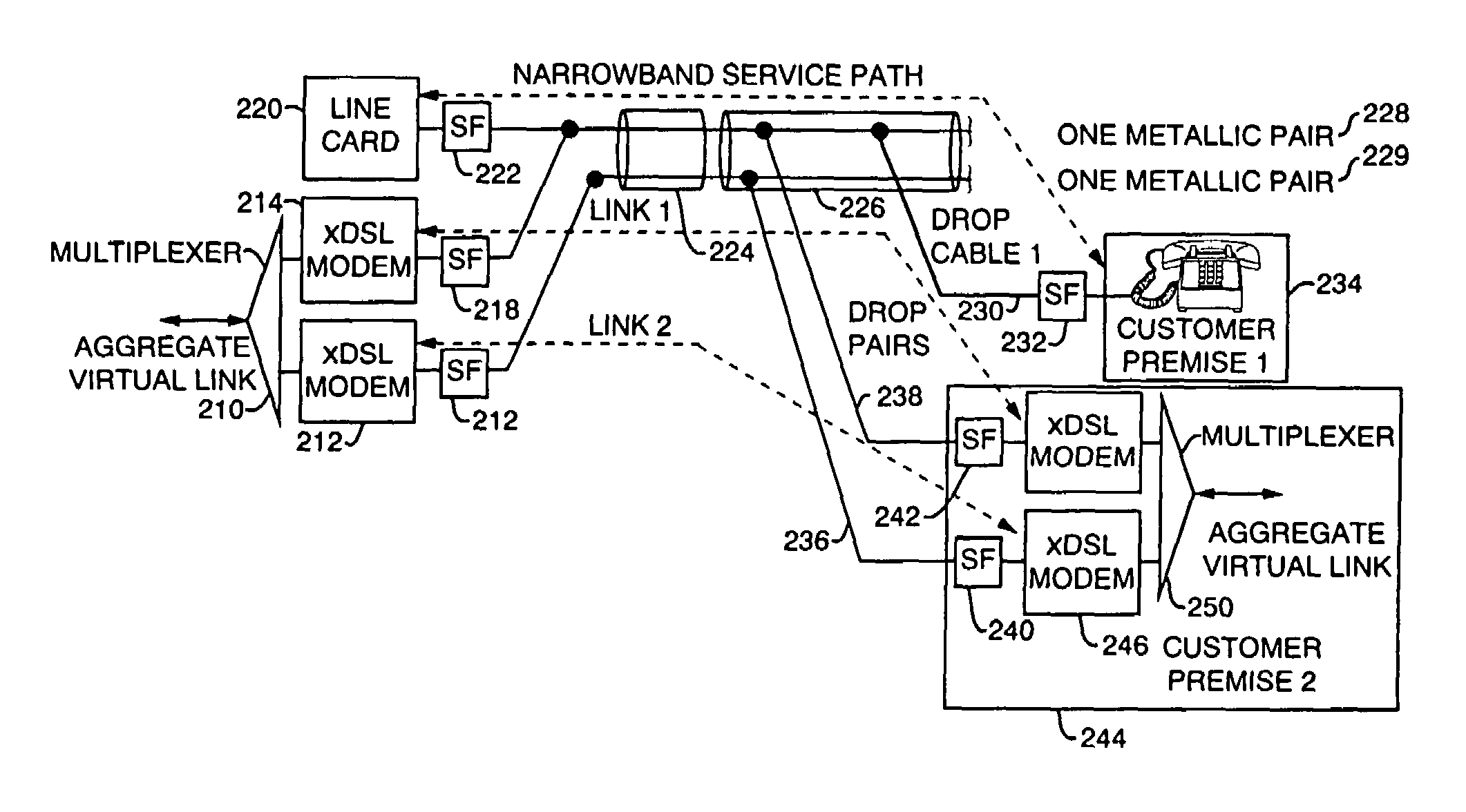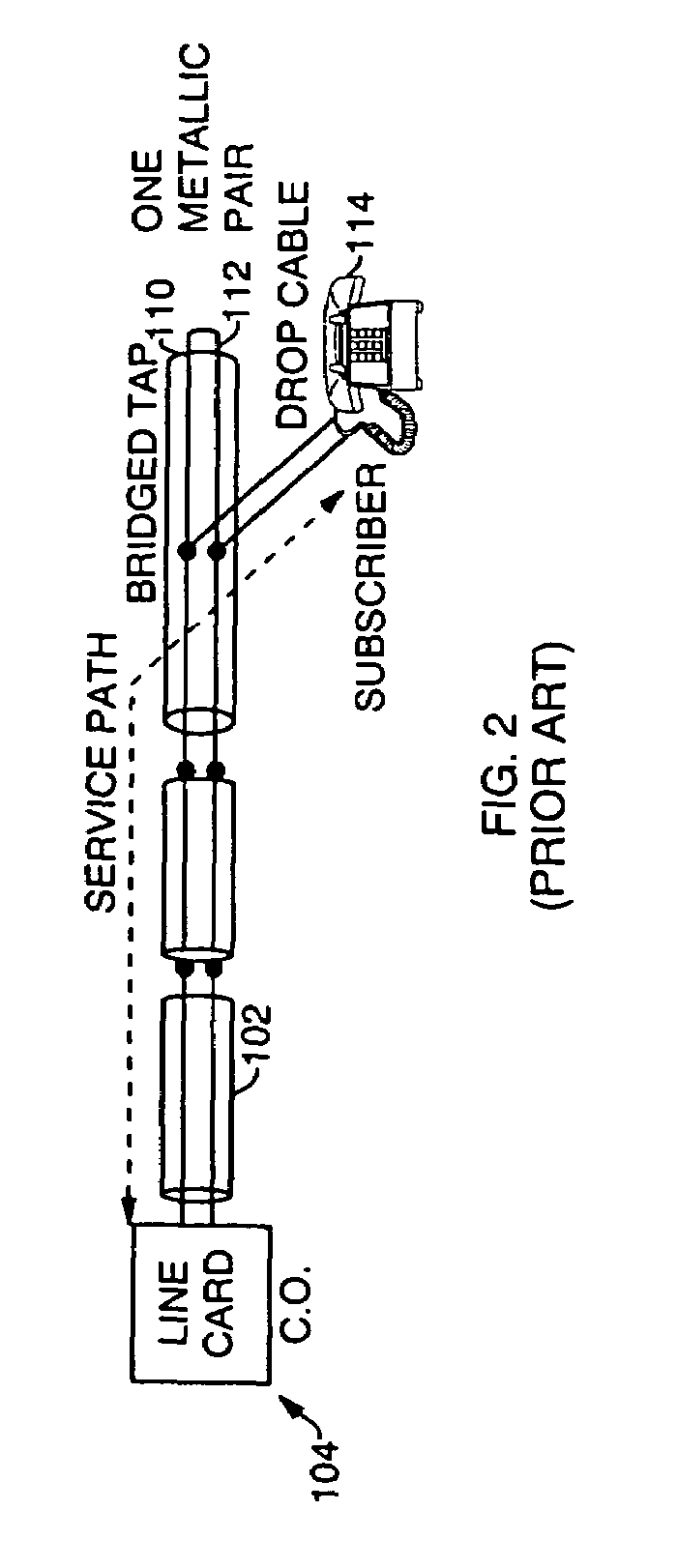Method and apparatus for service multiplexing over telephone networks which employ bridged tap construction
a telephone network and bridged tap technology, applied in the field of data communication, can solve the problems of insufficient number of metallic wire pairs in adequate condition to support full market deployment of broadband services, insufficient number of metallic wire pairs that pass each premises, and insufficient number of pairs available to meet the demand for services
- Summary
- Abstract
- Description
- Claims
- Application Information
AI Technical Summary
Benefits of technology
Problems solved by technology
Method used
Image
Examples
Embodiment Construction
[0023]FIG. 4 is a block diagram illustrating the simultaneous delivery of different services to physically separated subscribers over a shared single pair of wires in a bus-type network topology. At the network side of the line, narrowband and broadband services via line card 120 and ADSL modem 122, respectively, are coupled onto a wire pair (112) within bundle 102. While the broadband service is illustrated in this example as being an ADSL modem, it should be understood that other types of services may be used, such as, for example, VDSL. The narrowband service may be POTS service. The coupling of the different services is accomplished using service filters 124 and 126 which act to insert an information signal into and / or extract a received information signal from a particular frequency band. The service filters prevent the different frequency band signals from interfering with each other. Such couplers are well known in the art and typically utilize some form of transformer coupli...
PUM
 Login to View More
Login to View More Abstract
Description
Claims
Application Information
 Login to View More
Login to View More - R&D
- Intellectual Property
- Life Sciences
- Materials
- Tech Scout
- Unparalleled Data Quality
- Higher Quality Content
- 60% Fewer Hallucinations
Browse by: Latest US Patents, China's latest patents, Technical Efficacy Thesaurus, Application Domain, Technology Topic, Popular Technical Reports.
© 2025 PatSnap. All rights reserved.Legal|Privacy policy|Modern Slavery Act Transparency Statement|Sitemap|About US| Contact US: help@patsnap.com



